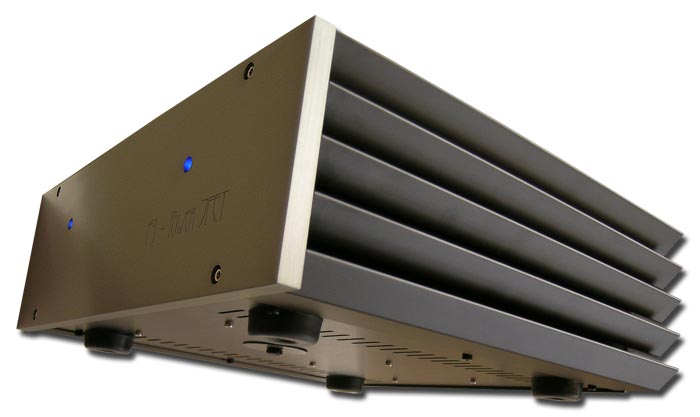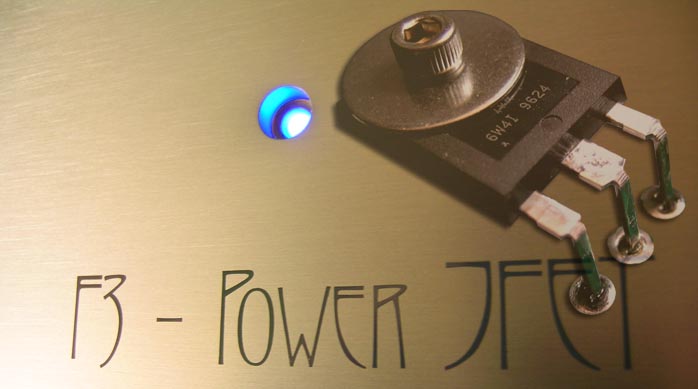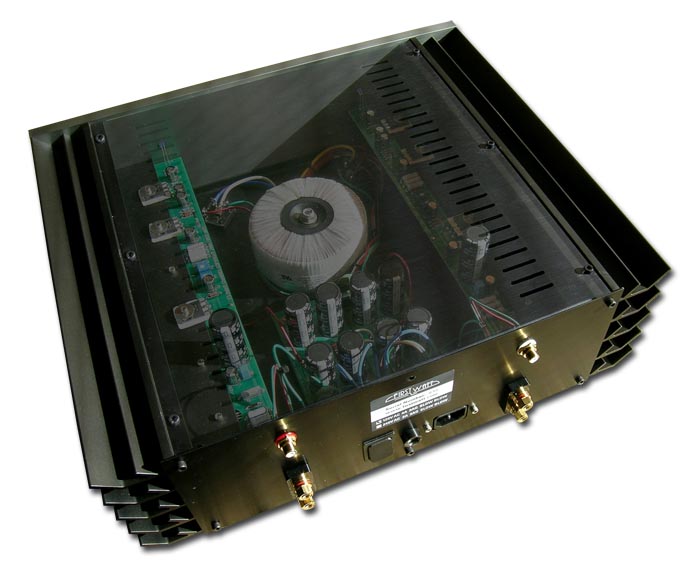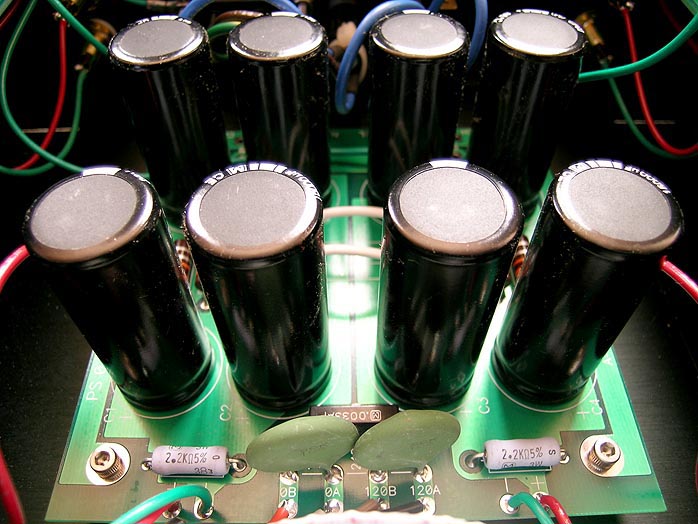|
|
|
|
This review page is supported in part by the sponsor whose ad is displayed above
|
|
 |
|
 |
|
The F3 is housed in the now familiar FirstWatt chassis but new for the F3 -- and the parallel Aleph J which Michael Lavorgna just received -- is the silver face plate. The F3 also features a snazzy font to celebrate "Now for something Completely Different" which is the actual header in the included owner's manual.
|
|
 |
|
As Nelson's preceding introduction has made abundantly clear, the object different -- I relate to this as Santa Fe here in Nuevo Mexico is called 'the City Different' by its clever tourist bureau -- is the power JFET, shown enlarged above.
|
|
 |
|
| Also clear from the introduction should be the fact that the F3 -- unlike its transconductance predecessors -- is an amp for all seasons and loudspeakers. Well, as long as 15 watts into 8 ohms will have you running strong. 4/16-ohm juice is diluted to 10 watts so he-man speakers should not apply. But crossovers are fine now since the F3 behaves quite conventionally as a voltage-source amplifier. Being pure Class A to translate into a 200-watt power draw, the F3 of course runs hot, hence the chunky heat sinks and need for a bit of common-sense 'free air' ventilation. |
|
 |
|
| Single-ended inputs and nice metal binding posts plus the expected power IEC and mains rocker make up the business end. |
|
 |
|
As a member of the illustrious Pass Zen dynasty, the innards celebrate simplicity and are thus more empty than not. Execution at the hands of the master means pristine workmanship.
|
|
 |
|
And while other American makers seem to watch the threat from the East partially paralyzed -- I'm of course talking about the never-ending tide of better and better Chinese imports -- FirstWatt concentrates on what Yankees have always prided themselves on: Innovation.
|
|
 |
|
Perhaps the small size of Nelson's kitchen table outfit is entirely appropriate with regards to how many still value innovation rather than rock-bottom pricing?
|
|
 |
|
I don't know Nelson's bookkeeper nor is it any of my business - but it's probably fair to say that Mr. Pass doesn't really have to work another day in his life. Instead of becoming a scuba instructor in the Seychelles or enjoying retirement from this crazy audio business some other way, Nelson Pass continues to have fun and explore the roads less traveled.
When you think about it, FirstWatt nearly requires this state of semi-retirement -- at least semi retirement from severe economical pressures such as are the cheap lunch fellas of most start-up entrepreneurs -- to justify the kind of limited sales that fringe projects will generate; especially when the mad designer is uncommonly gracious with giving away inventions to the DIYers.
|
|
 |
|
The fate of the F3 at present isn't clear - limited production of 100 or open-ended availability. As current-source amps dedicated to crossover-less single-driver speakers, the F1 and F2 were deliberately restricted to 100 production models each. As such, the F1 has already transitioned into DIY clones, with the service schematic published and all Pass-built units sold (though some remain available on the used market as trade-ins for later FirstWatt amps). The F2 will similarly go DIY once the production run has sold off. As an amp of far broader appeal and suitability for really any speaker that comes on song with the available power, the F3 could well enjoy a far larger litter. But that remains up to its inventor. How soon will some new idea romance him away from personally hand-building each F3 that will be offered?
With a low 13dB of gain to counteract the silly trend of 26dB+ preamps, even the ear-in-the-driver test on my 101dB Zus can't tell whether the F3 is powered on or off. The setting on my TVC's control -- with the +6dB step-up gain engaged since I prefer the sonics that way -- sits at minus 8 to minus 12dB for customary listening, meaning essentially unity gain from a 2.35V-out digital source like the Consonance Reference 2.2 Linear player. Anyone with speakers lower than 100dB will use an active preamplifier with the F3 . Even speakers above 100dB could mandate active preamplification if you listen very loud or in a room a lot larger than mine. |
|
|
|
|
 |
|
 |
|
 |
|
|
|
|
|
|